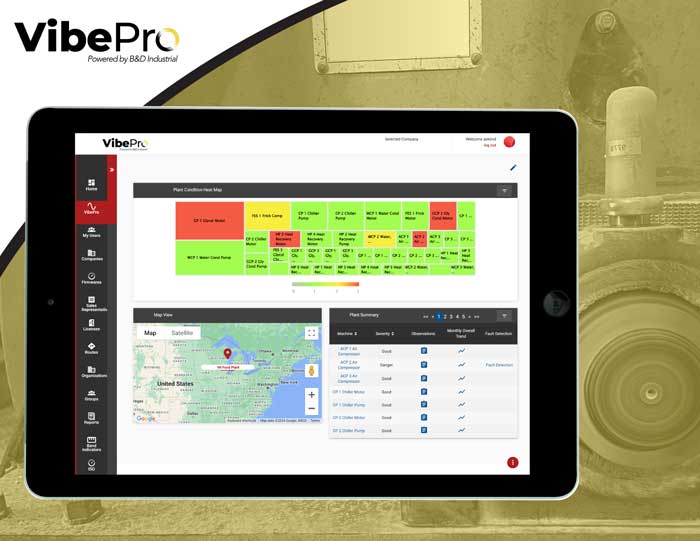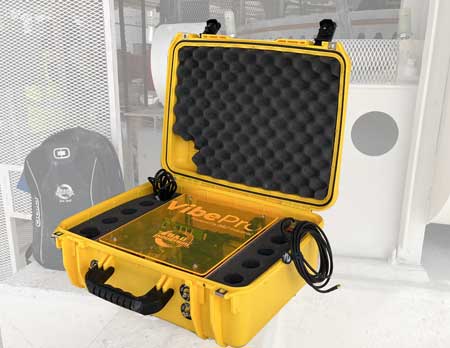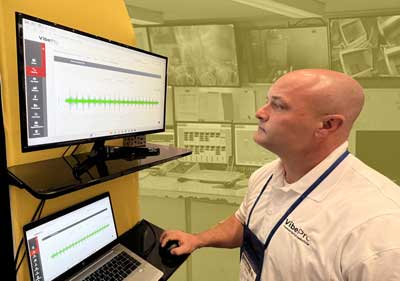
Wireless vibration monitoring and remote vibration monitoring are now indispensable tools used to monitor and help maintain an extensive range of manufacturing machinery. This is important now more than ever to help maximize industrial machinery uptime is critical. Downtime leads to losses in revenue, productivity and operational efficiency. Today, we’ll review these technologies and how they can be leveraged to help minimize downtime and increase efficiency and profitability.
What Is Wireless Vibration Monitoring?

Wireless vibration monitoring allows users to monitor machine health condition without cumbersome cables and connectors. This technology offers a range of benefits that traditional systems don’t offer, which we’ll review in a bit. Let’s start with the main components and the role of each.
Wireless Sensors – these components, known as accelerometers, measure fluctuating acceleration forces caused by vibration, and are mounted directly to the machinery to detect vibrations on multiple axes.
Transmitters – are used to wirelessly relay the vibration info to a monitoring system or cloud-based platform, if online vibration monitoring is being used. Several communication protocols are available including Wi-Fi and Bluetooth, among others.
Gateway/Receiver – collects data from one or more wireless sensors and transmits it to the central monitoring system, either on-site or via the cloud. It acts as a bridge between the sensors and the monitoring software.
Monitoring Software – processes the vibration data, allowing for real-time analysis, trend visualization, and alert mechanisms. Alerts are a critical component, as they can notify technicians and other shop personnel in real time that certain data is out of range. This allows them to take action quickly, usually before a smaller problem grows into a much larger, and potentially costlier or more dangerous one.
Advantages of Wireless Vibration Monitoring
When compared to traditional, wired vibration monitoring approaches, wireless offers many benefits as follows:
Simple Installation – wireless vibration monitoring systems are easy to install – simply mount the sensors to the machinery, and you’re ready to go. No cables or connectors to deal with!
Flexible – with wireless sensors, you can easily reconfigure and expand your monitoring network without the hassle of re-routing cables.
Cost-Effectiveness – reduced installation time and material costs translate to significant savings.
Wireless Monitoring Applications
Wireless vibration monitoring is typically used for rotating equipment including motors, pumps, and compressors. They also excel for difficult-to access locations and allow users to monitor equipment in remote or hazardous areas where running cables would be impractical or dangerous.
What is Remote Vibration Monitoring?

As the label suggests, remote vibration monitoring, also known as online vibration monitoring, allows users to monitor their equipment anywhere they have an internet connection. This means machine health can be centrally monitored 24/7 – allowing users to detect data anomalies quickly from multiple locations. It relies on the use of the Internet to transmit and store data and leverage the use of cloud-based applications for analysis. However, it does not require that the sensors are wireless.
Advantages of Remote (or Online) Vibration Monitoring
There are many benefits to remote monitoring, which include:
Real-Time Data Analysis – online vibration systems continuously analyze vibration data, identifying trends which help to predict potential failures.
Data Integration – remote systems can integrate with other condition monitoring tools and software, providing a more complete view of equipment health.
Process Efficiency – since multiple systems from many locations can be monitored in one place, this means fewer resources are required. For instance, a large manufacturer with multiple production facilities can transmit all data to one central facility.
Accessibility – engineers and technicians can access vibration data from any location, reducing the need for on-site visits and enabling faster response times.
From the central location, trained technicians can spot issues and receive important alerts. They can then instruct on-site personnel at the affected location to check on things as needed. For instance, an out of upper range temperature signal could be indicating that a fire has started. Knowing and acting on this in real time can make a considerable difference in the outcome.
Applications of Remote Vibration Monitoring
These advantages make remote monitoring ideal for organizations with facilities around the country or the world. Also, the technology is perfect for manufacturers that rely on third-party service providers to monitor and analyze the data.
Conclusion
Wireless and remote vibration monitoring systems are transforming machinery maintenance programs. By embracing these technologies, companies can enhance their operational efficiency, increase uptime, and achieve a higher level of machine reliability.
Whether you’re looking to implement a wireless monitoring system for its flexibility, leverage remote monitoring for its accessibility, or adopt online monitoring for its predictive capabilities, now is the time to get a predictive solution in place. Once it’s up and running, you’ll wonder how you ever did without it.
